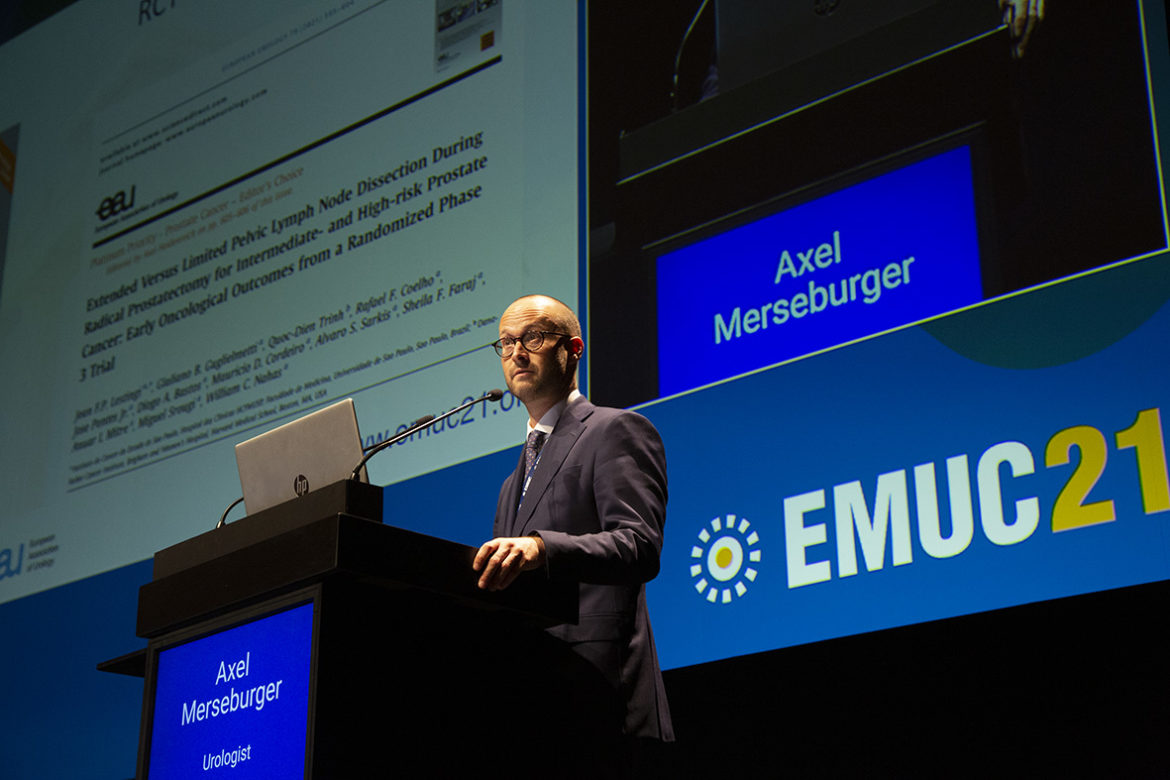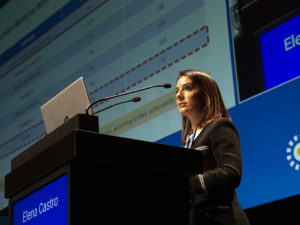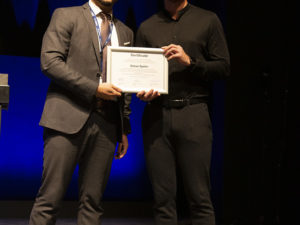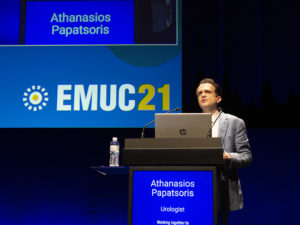Being an event with a multidisciplinary nature, the take-home messages of the 13th European Multidisciplinary Congress on Urological Cancers (EMUC21) in Athens were divided into different fields. On the last day of the congress, Prof. Maurizio Colecchia (IT) delivered the summary on pathology, Prof. Michael Pinkawa (DE) on radiation oncology, Prof. Axel Merseburger (DE) on urology, Prof. Raymond Oyen (BE) on radiology, and Prof. Jan Oldenburg (NO) on medical oncology.
Pathology
Prof. Colecchia’s first take-home message came from the EMUC Symposium on Genitourinary Pathology and Molecular Diagnostics (ESUP) on the very first day of EMUC21, specifically from Dr. Gladell Paner’s (US) presentation. In this presentation, Dr. Paner gave updates on the new WHO classification of renal tumours. “The new WHO renal tumour classification has included morphologically-defined and molecularly-defined entities,” Prof. Colecchia said.
Later, Prof. Colecchia referred to Prof. Paolo Gontero’s (IT) presentation in Plenary Session 3 for his pathologic takeaways regarding non-muscle-invasive bladder cancer (NMIBC): “Promising urinary markers for surveillance challenge urine cytology and will likely replace it in clinical practice. No prognostic marker can currently be recommended in clinical practice. Molecular classifications are promising but are not yet ready for routine application.”
Having included the conclusions from Prof. Lars Dyrskjøt’s (DK) presentation on the use of circulating tumour DNA (ctDNA) biomarkers in high-risk and metastatic bladder cancer, Prof. Colecchia ended his summary with his vision for the future: “I have great expectations for the coming years. In particular, the molecular characterisation of uro-metastatic patients and the use of liquid biopsy in the routinary management of these patients will be the gold standard. Other useful tools that will become more prevalent are artificial intelligence and digital pathology.”
Radiation oncology
Prof. Pinkawa gave the conclusions on radiation oncology. “There is a lack of data on the treatment outcome of the use of PSMA PET in prostate cancer patients. It has clinical importance, which will be further defined in studies over the next years.” He cited Dr. Stefano Fanti’s (IT) lecture, who had said in Plenary Session 1: “The 2022 EAU Guidelines on Prostate Cancer will recommend using PSMA PET or a whole-body MRI in high-risk patients to increase the sensitivity. The guidelines will emphasise the very important limit of the lack of outcome data on subsequent treatment changes.”
About radio-immunotherapy for bladder preservation, Prof. Pinkawa said, “There are studies taking place on bladder preservation with the combination of radiotherapy and immunotherapy. Specifically in the UK, bladder preservation using radiotherapy is considered as a standard method that is more frequently used than a cystectomy, especially now in these times of COVID. But currently we don’t have convincing data considering this combination. We have some data that showed increasing toxicity that is not tolerable, and we don’t have convincing results yet that really show an improved disease-specific survival.”
Urology
European Urological Scholarship Programme (EUSP) Chair Prof. Merseburger offered the key messages of lectures intended especially for urologists. These included trial updates of “Extended vs limited Pelvic Lymph node dissection in prostate cancer” which was presented by Dr. Jean Lestingi (BR). “In a subgroup analysis, intermediate- and high-risk patients in particular, benefitted from extended lymph node dissection (EPLND). EPLND remains the gold standard for lymph node staging. Its oncological role still needs to be defined,” stated Prof. Merseburger.
He reiterated one of the key points of the Trial of Imaging and Surveillance in Seminoma Testis (TRISST) presented by oncologist Dr. Stefanie Fischer (CH) during a multidisciplinary case discussion on active surveillance: MRI is non-inferior to computer tomography, avoids irradiation, and should be recommended.
Radiology
Radiologist Prof. Oyen discussed some of lectures centred on radiology such as “The new mpMRI: Biparametric MRI: fast and accurate” by radiologist Dr. Giorgio Brembilla (IT) in Plenary Session 1: The MRI Corner: Faster and cheaper. Prof. Oyen underscored the take-home message that biparametric MRI (bpMRI) lacks dynamic contrast enhanced sequence (DCE-MRI) and may lead to greater uncertainty in lesion detection and scoring.
Oncology
The last presentation of EMUC21 came from Prof. Oldenburg, who took to the stage and provided conclusions from oncology-centric presentations. He stated PSMA PET findings are predictive for decreased biochemical recurrence (BCR) and treatment-free survival. This is one key messages from the debate “Should PSMA PET impact on treatment in newly diagnosed PCa (debate yes vs no)?” wherein Prof. Tobias Maurer (DE) represented “Yes”.
All take-home messages can be found in the EMUC21 Resource Centre. EMUC21 delegates can access all presentations, full-text abstracts, and (e-)posters here.
The 14th European Multidisciplinary Congress on Urological Cancers (EMUC22) will take place from 10 to 13 November 2022 in Budapest, Hungary. We look forward to seeing you there!





